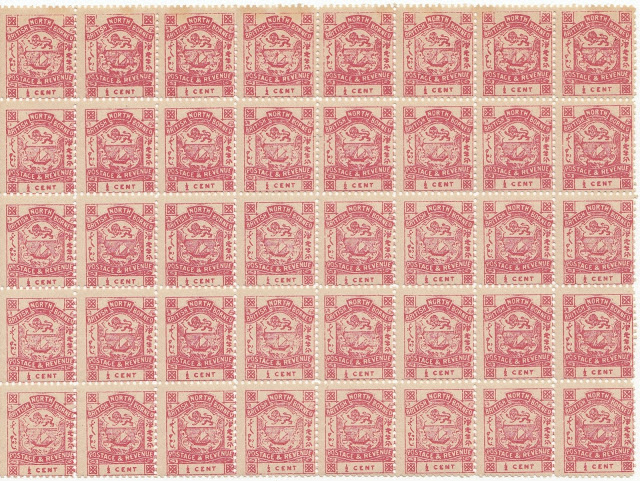The 5c slate was issued in 1889, the 6c lake in 1892 and the 10c blue in 1891.
The 5c is a handsome stamp. There are two easy features to identify it. The little dash which follows on after the initial down stroke of the first part of the second Chinese character is invariably present in most genuine 5c stamps. In addition, the 5 in 5 CENTS has an extended bottom stroke making it look more like a spoon or scoop.
Only the middle stamp in these 2 rows is genuine. The fakes have a generally duller colour. The 5 in 5 CENTS in the fakes actually look more normal without the extended tail stroke. The right sided corner ornaments are also slightly off centred. Note also how the second Chinese character touch or almost touch the adjacent frame line in the fakes.
With the genuine stamp, there is a consistent coloured dot in the left upper ornament as shown.
The coloured dot flaw above the frame line between T and H in NORTH is a consistent finding in the genuine 10c stamp.
The first stamp of this trio is genuine with blue shade followed by the dull blue. The stamp on the right is the fake version with a dull deep blue colour. The fake 10c stamp is surprisingly uncommon compared to the genuine stamp as far my collection is concerned but whole sheets are known. It lacks the coloured dot flaw.
This is to show that the small stamps of this set are not all of the same size. The 6c is the smallest followed by the 2c whereas the half cent is the tallest of this group. The 6c was definitely prepared and printed at a later date after North Borneo joined UPU on 1 July 1891 with the need for a 6c stamp for the postcard rate to GB and other distant Union countries. It was issued for use in 1892.






















































